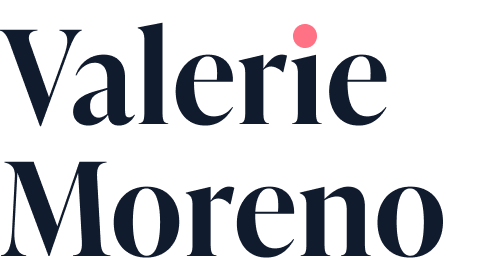** Sensitive work: Due to NDAs, I will not be able to show full details. Please reach out for further information.
ABOUT THE CLIENT
The client was a leading global real estate investment manager with nearly $100 billion in assets including office space. They were facing challenges with office space due to the rise of the hybrid work model, leading to higher vacancy rates and shorter lease terms.
However, it's recognized that the office is an opportunity for collaboration, and attracting and retaining talent. Therefore, we wanted to transform our client from a traditional landlord into an active partner in enhancing employee engagement.
As one of the 2 CX Researcher/Designer on the team, I worked closely with the CX and new venture team to strategize research plans, draft interview scripts, conduct 64 pain point and prototype interviews with Employee Experience Leaders and Employees, and design a series of landing page and dashboard prototypes.
IMPACT
✤ 9/10 average customer validation score
✤ Ready to pilot in 8 buildings across 5 cities
✤ 64 one-hour interviews from over 150+ leads
✤ Designed 20+ dashboard prototypes
LEADERSHIP IMPACT
"I was incredibly impressed, and grateful, for how collaborative, open and willing Val was as a teammate, especially in what was an extremely dynamic, ambiguous and challenging environment. Val's outstanding work on our prototype content and design, as well as her excellent job leading customer and expert interviews, proved critical in advancing our learning and ultimately developing our solution."
PROBLEM
Traditional offices are outdated and no longer meet today's needs- a new experience is needed to attract and retain top talent.
Both crucial in this transformation are Employees and Employee Experience Leaders. Employees need to feel that their needs are prioritized, while Employee Experience Leaders must understand these needs to make informed decisions in creating the right environment.
To address this challenge, our team set out to understand the current challenges in today's offices and identify an MVP that would transform our client from a landlord to an active partner in enhancing the workplace experience and creating long-lasting tenant relationships.
THE PROCESS
DISCOVERY
DOMAIN CANVAS
Our initial discovery phase consisted of Domain Canvas work, which was a collaborative effort between myself and the rest of the CX team. We conducted desk research to understand the client company's ecosystem and the broader industry space. This step provided us with essential context and was crucial to provide us with a framework to guide our research.
CONCEPT CARDS
At the start of our project, our client shared findings from initial research in the workplace experience space. As a CX team, we created a series of concept cards based on these findings to explore potential solutions. We chose concept card testing as a quick way to gauge desirability before investing more time in high-quality prototypes.
However, after two rounds of testing with Employee Experience Leads, the feedback we received didn't provide a clear understanding of their needs or indicate strong signals of desirability.
DEFINE
In order to get a clearer understanding our stakeholders needs, we shifted to a new hybrid testing approach.
HYRID TESTING APPROACH
Our hybrid testing approach included a customization exercise where Experience Leads selected areas where they most desired support.
In addition, we conducted a pain prioritization test with pains heard from initial testing done by our client. We gave participants a hypothetical budget of "$100" to allocate on solving their top pains.
Both exercises were facilitated through Miro. This was an experimental and interactive testing approach that proved to be highly effective. It yielded positive feedback from participants as we felt they were more engaged than typical interviews.
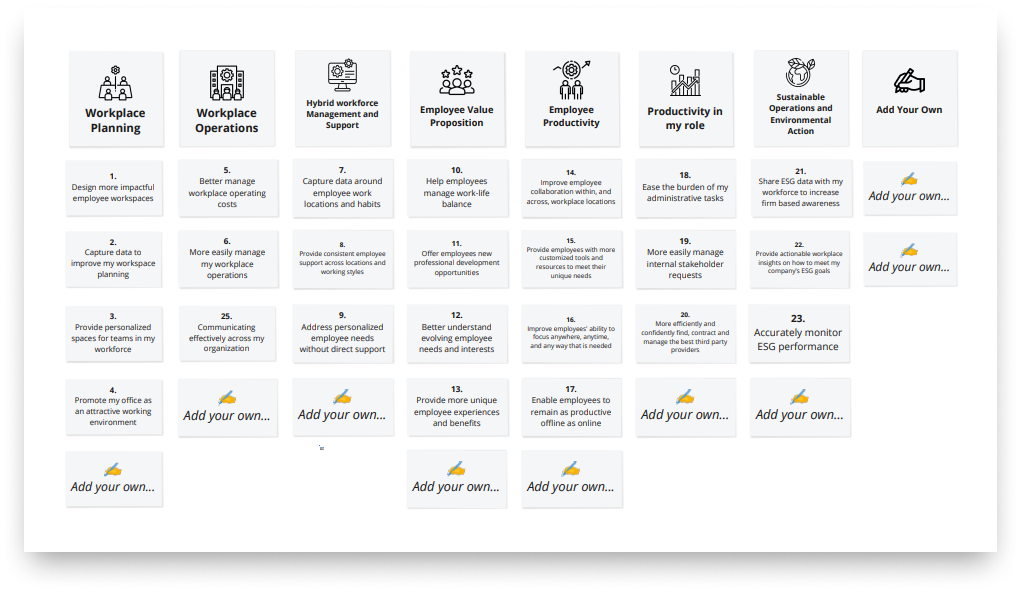

COLLABORATIVE DATA SYNTHESIS
After two rounds of interviews, we conducted synthesis sessions to organize and analyze the data. I collaborated with the CX team on Miro to create clusters of insights, identifying patterns from the interviews.
In these sessions, I also encouraged New Venture team members to generate their own insights and share with the team.
In these sessions, I also encouraged New Venture team members to generate their own insights and share with the team.
FINDINGS
Following our interviews and two rounds of synthesis sessions, we found that Experience Leads need real-time employee data and ongoing learning about their workforce. They struggled to to adapt to the changing needs of their employees, making it difficult to create environments that attract and retain employees.
Our findings highlighted the need for a tool to engage employees and collect accurate data on their behaviors.
VALIDATING NEEDS WITH EMPLOYEES
Having identified the need of collecting data for Experience Leads, we wanted to explore what solutions would be desirable for Employees that would concurrently provide leads with data.
Based on previous research, we identified three pillars of employee needs (meaningful connections, agency, and belonging) that would serve as inspiration for 15 new concepts. These concepts were tested across three rounds of interviews with Enterprise Employees.
SURVEYS
We received insightful feedback and started to see patterns emerge, but due to the large size of offerings tested, we felt a larger sample size was critical to show significant quantitative difference between our value propositions. We created two surveys on Qualtrics:
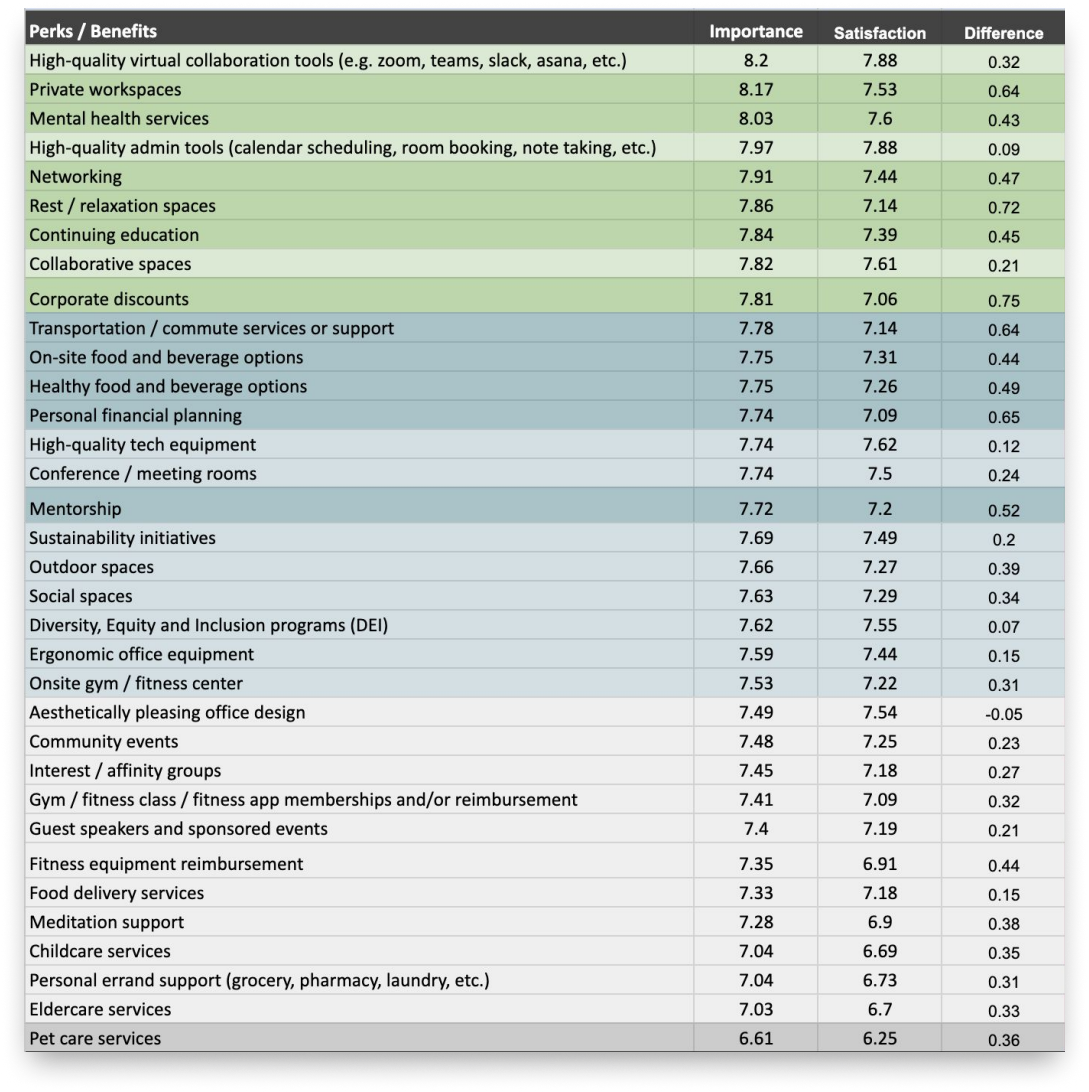
Survey 1 - 275 responses; helped us narrow our potential offerings to wellness, convenience, spaces, and connections,
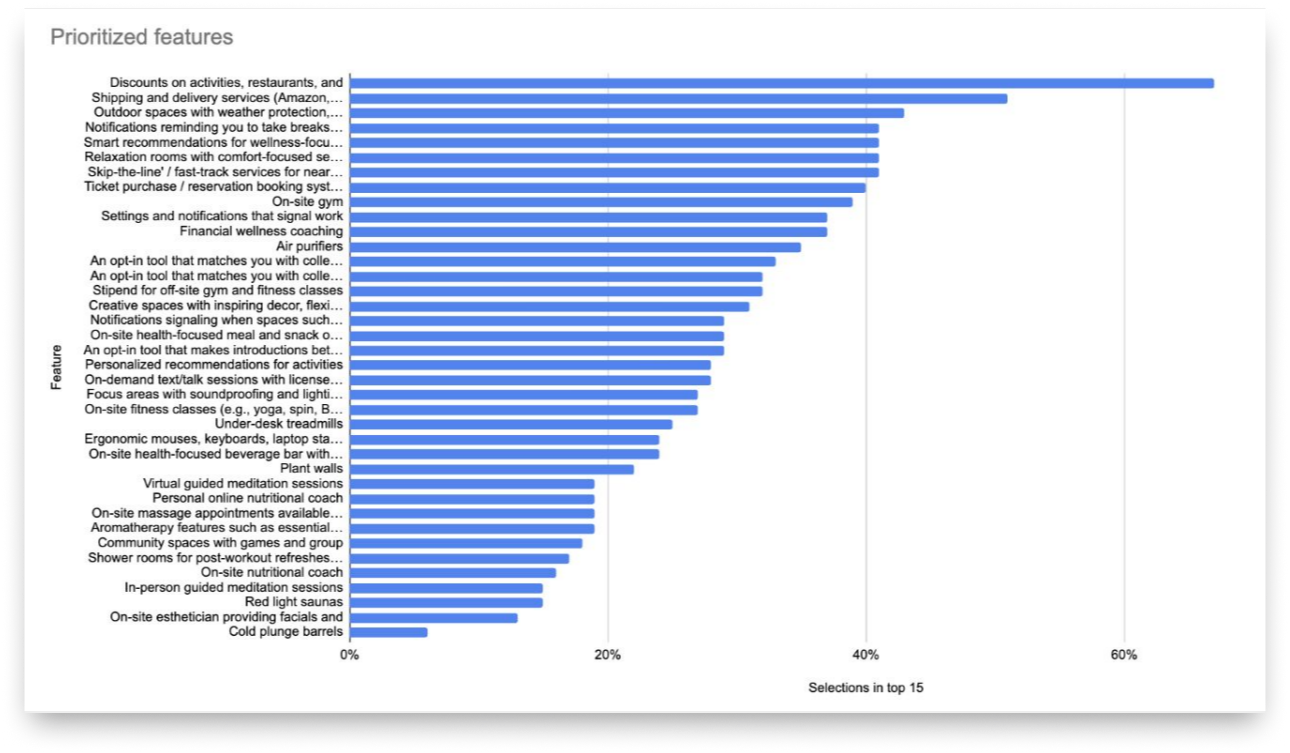
Survey 2 - 300 responses; helped us further narrow which features would be most vital in an MVP.
DEVELOP: PROTOTYPE
Our previous exercise allowed us to narrow what offerings were most important to our stakeholders. After two rounds of testing, we felt ready to further define our concept through high-fidelity prototypes.
VERSION 1 - EMPLOYEE EXPERIENCE LEADS
The first landing page was designed for Employee Experience Leads, showcasing how our solution would provide them with data and actionable insights to enhance the workplace experience.
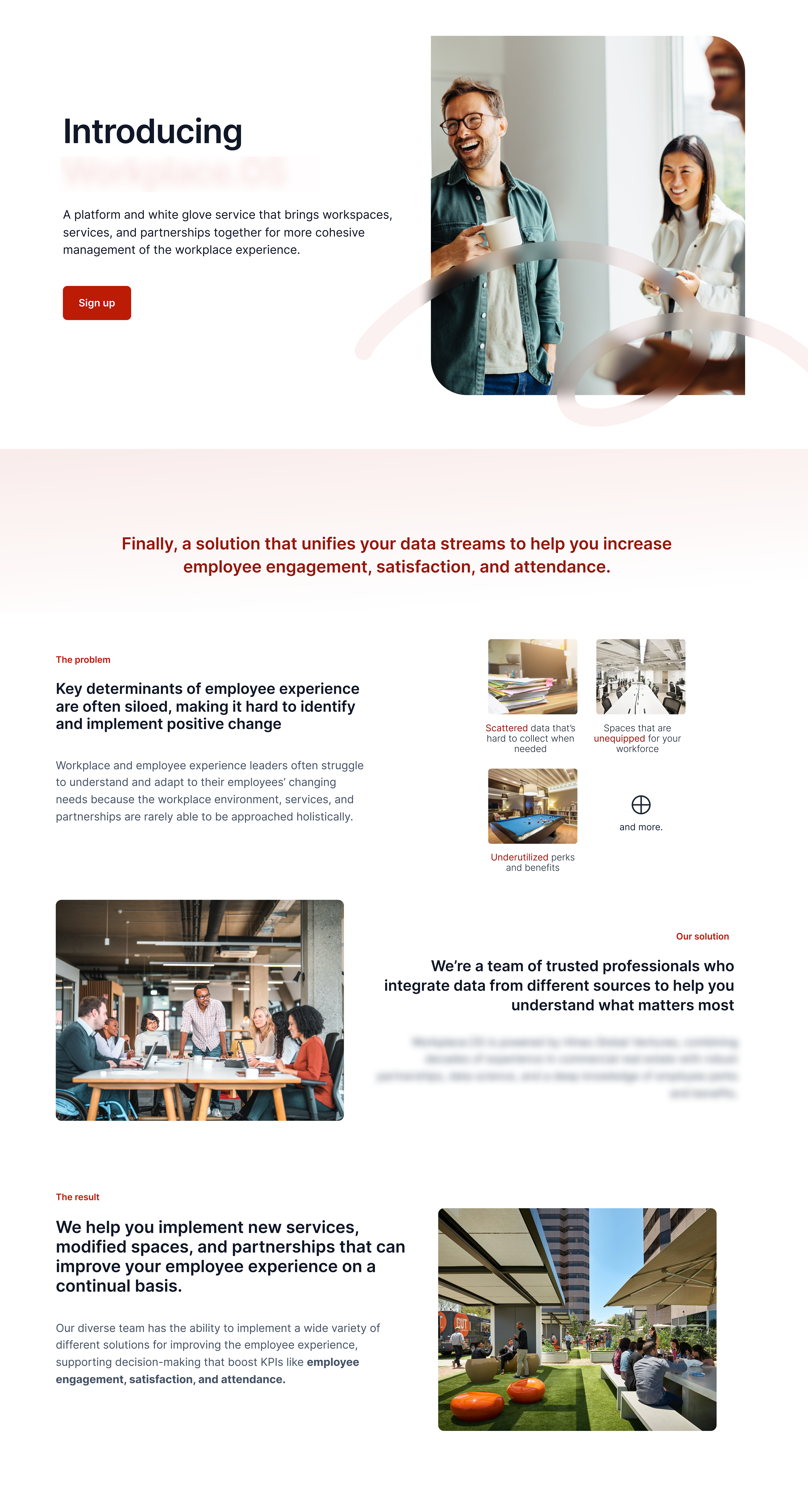

VERSION 2 - ENTERPRISE EMPLOYEES
The second landing page was tailored for Enterprise Employees, highlighting the benefits available to them through our solution.
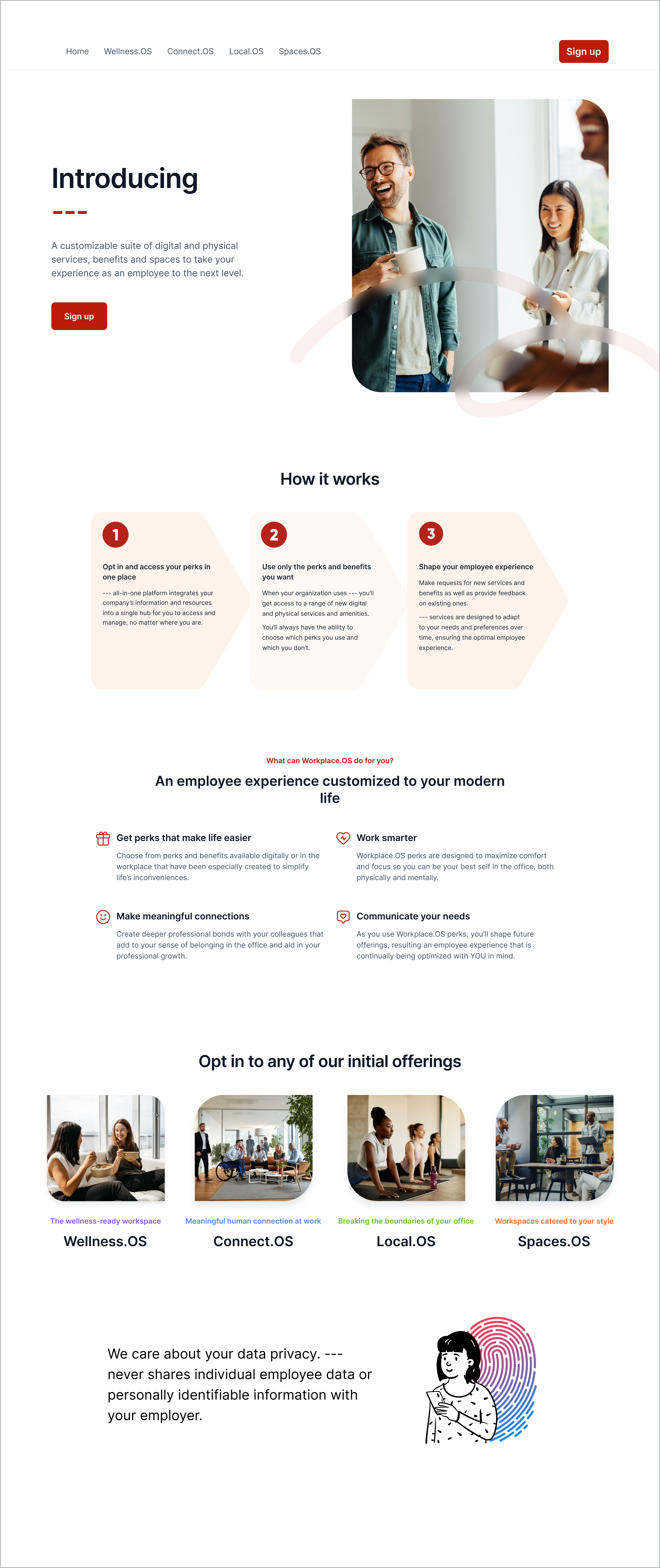
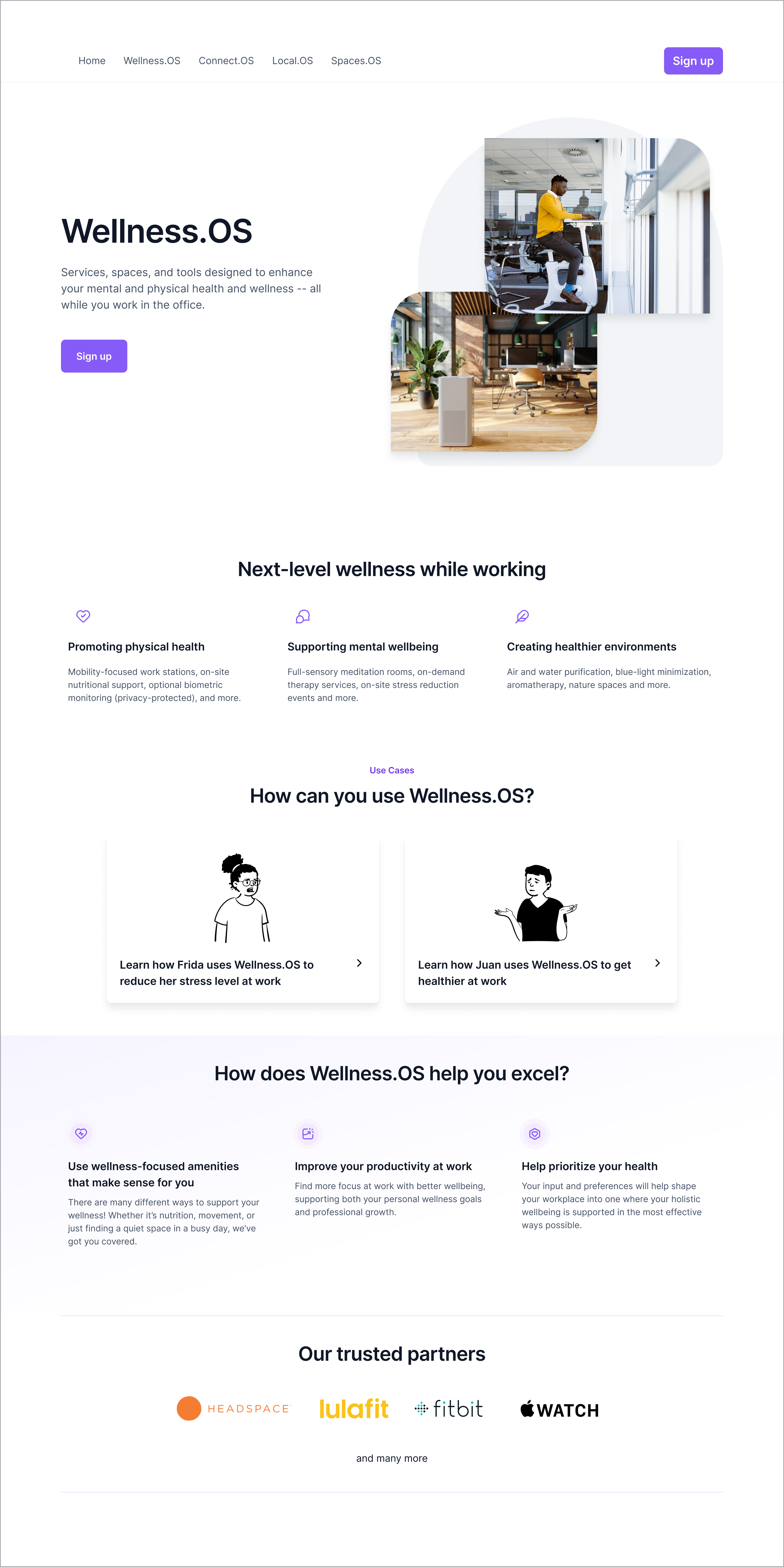
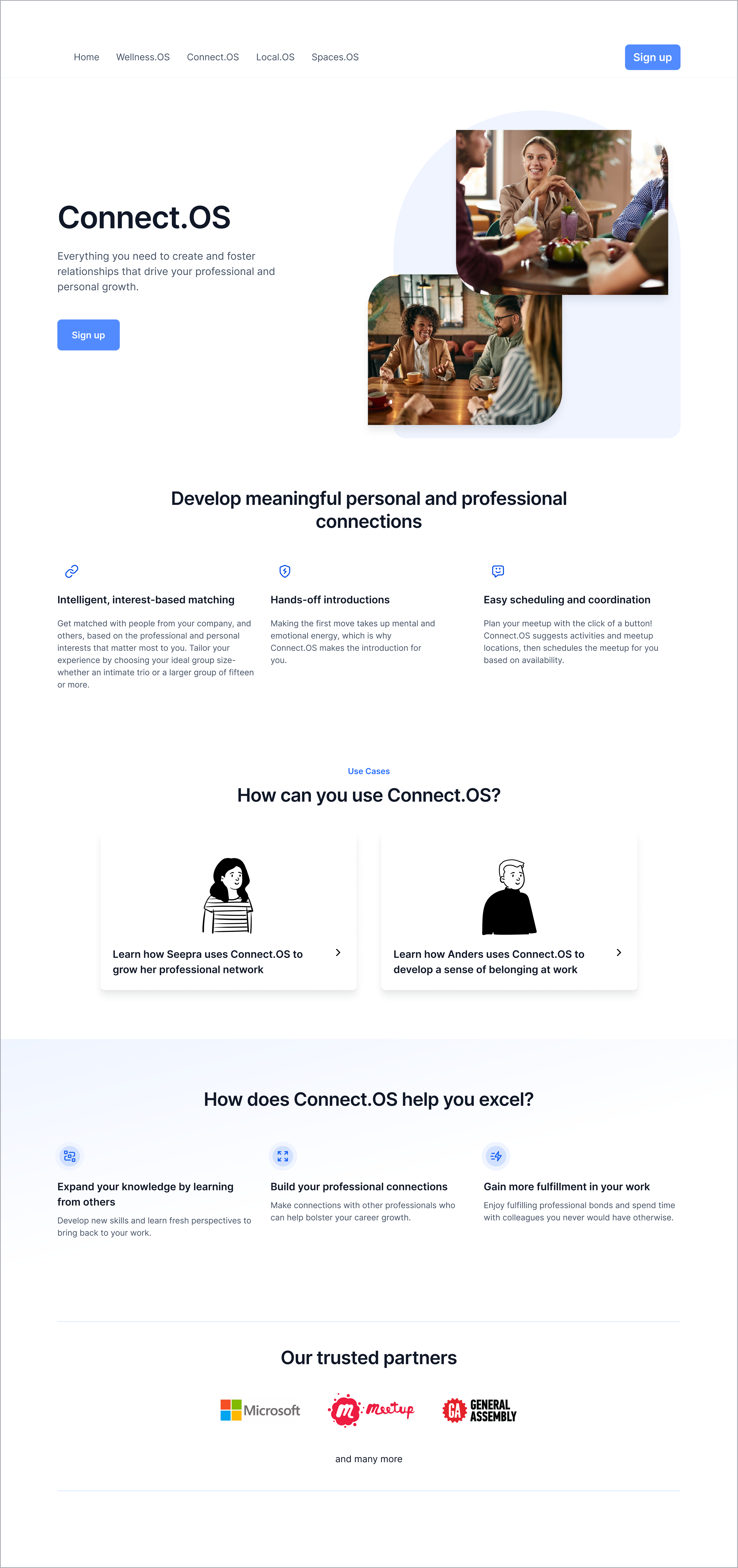
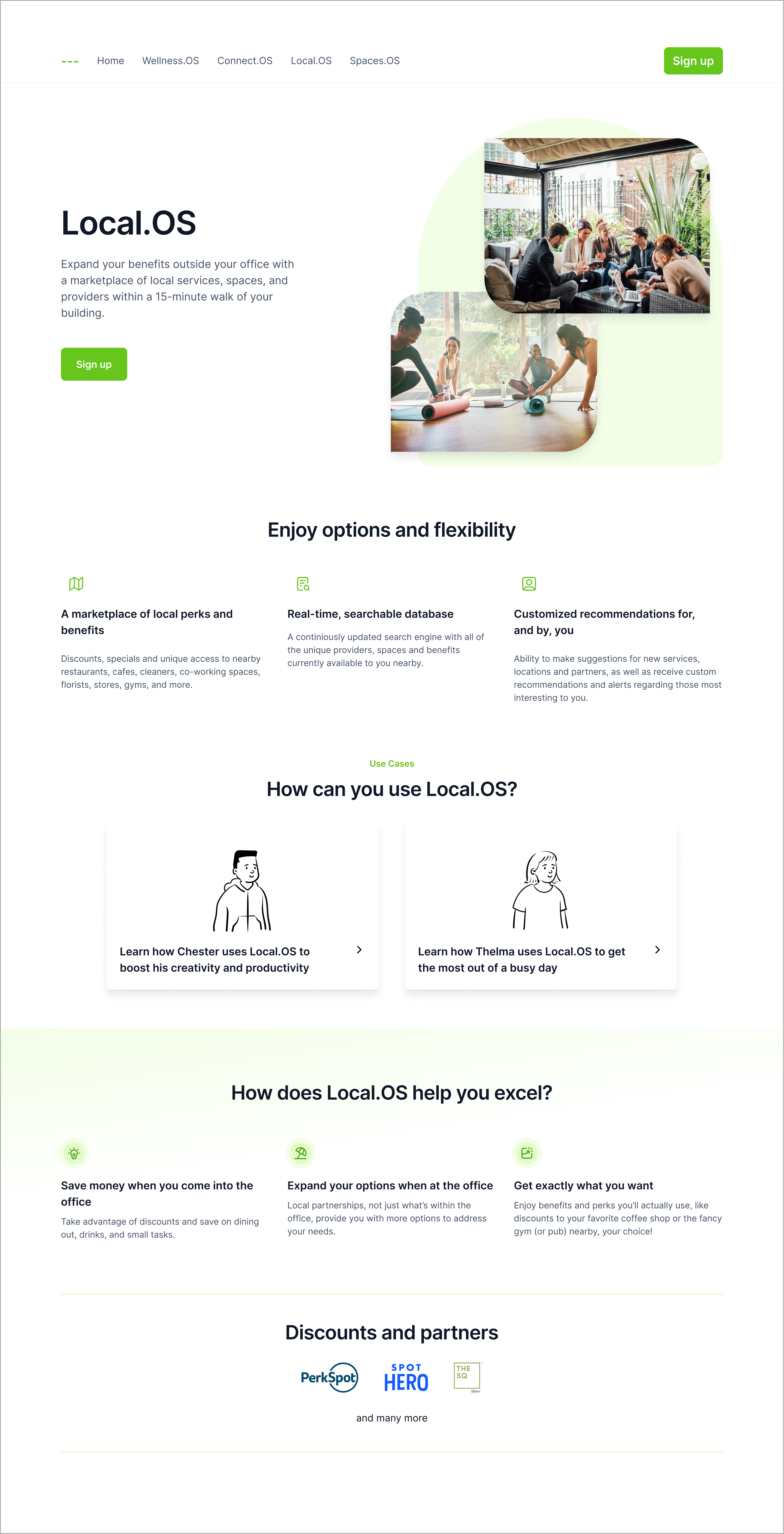
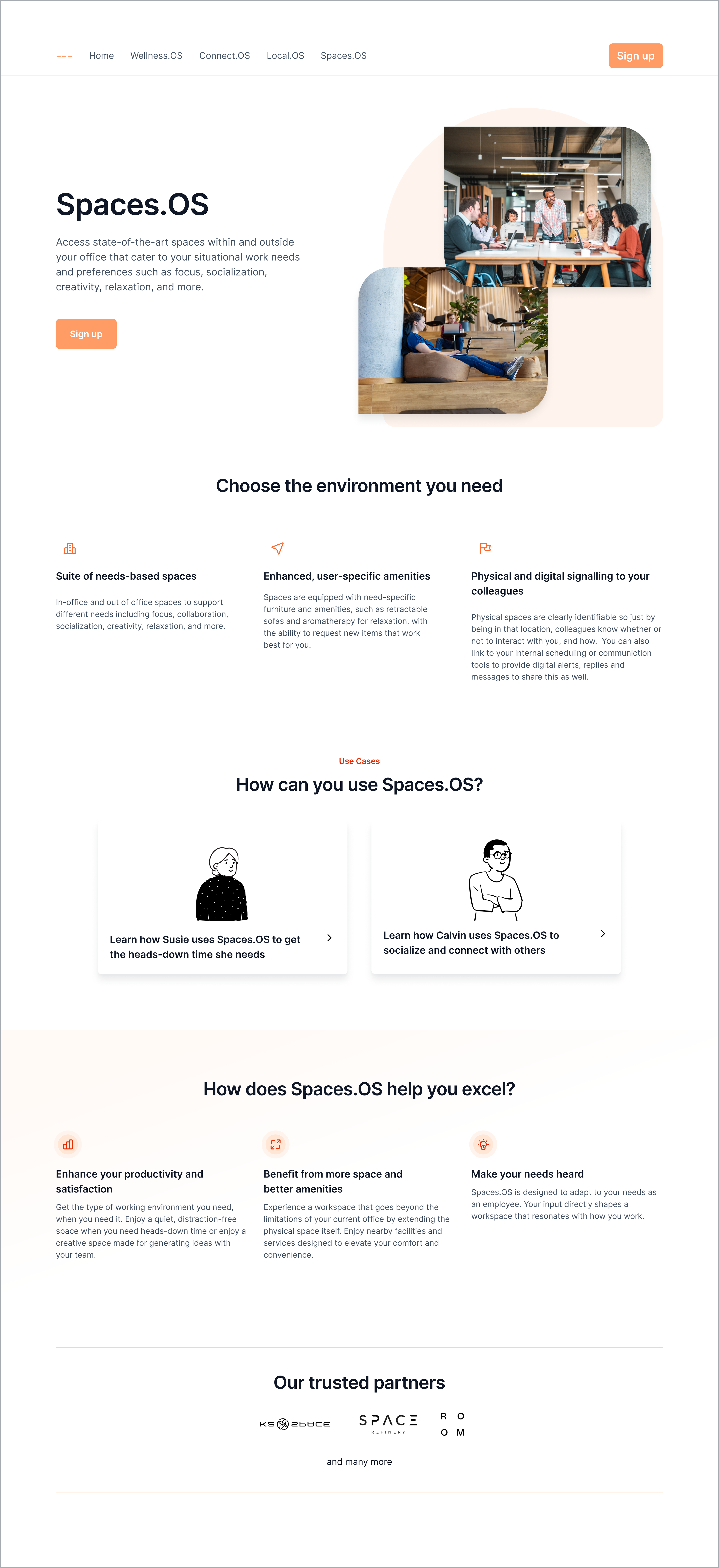
LANDING PAGE INTERVIEWS
I led a series of landing page interviews, along the rest of the CX team, to gather feedback on how well each value proposition communicated its value and addressed pain points. I collaborated with the Product Designer to design our prototypes on Figma.
We achieved a final average NPS score of 9.2 from Employee Experience Leaders. This was a significant increase from our initial NPS scores.
FINDINGS
After 3 rounds of prototype testing, Employee Experience Leads confirmed that actionable insights and continuous learning was an attractive value proposition. Employees also confirmed they were excited about the offerings and would feel motivated to engage.
DELIVER: FINAL MVP
After getting feedback, our final MVP was a dashboard for Employee Experience Leads offering real-time insights and recommendations to enhance employee engagement.
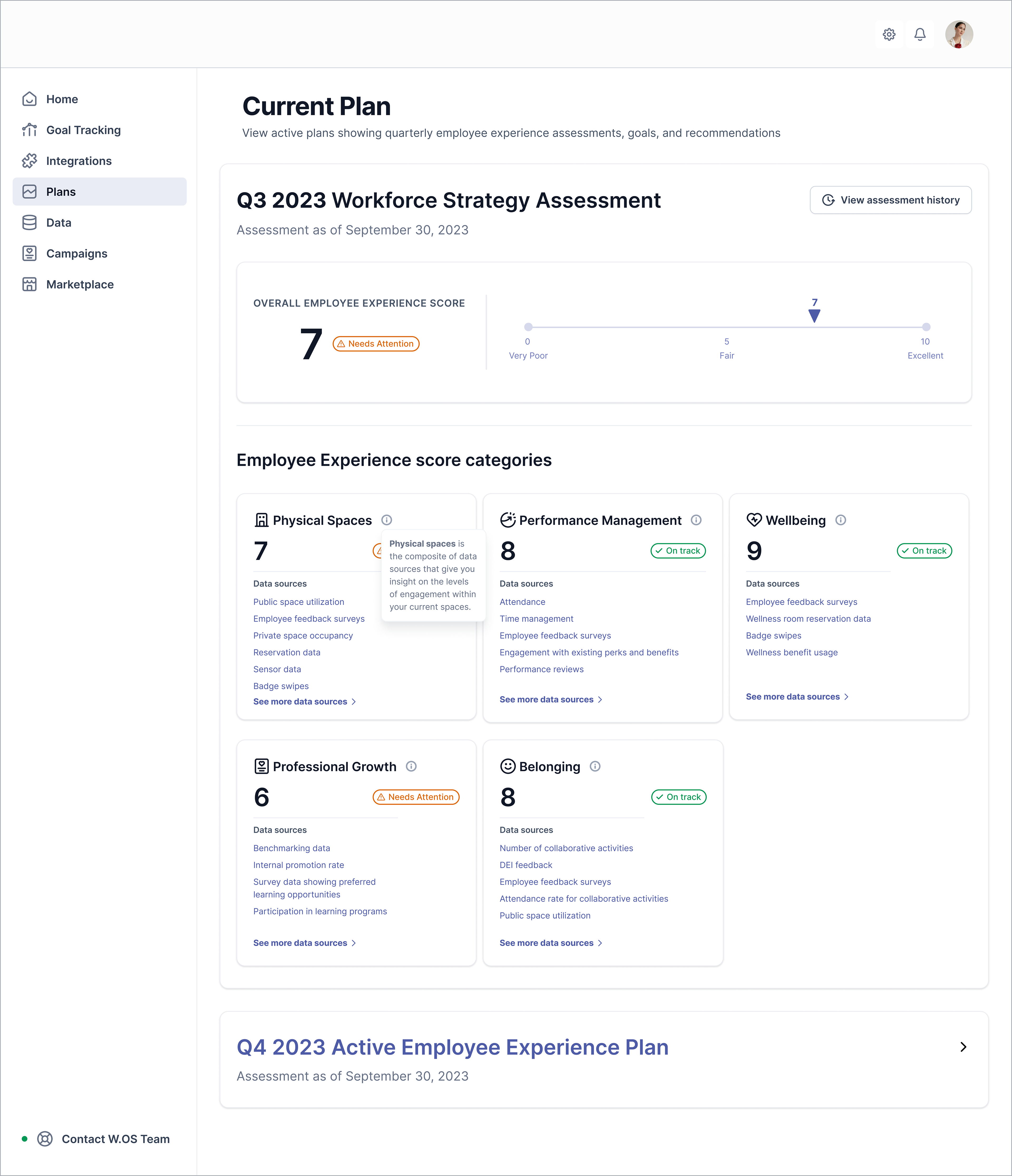
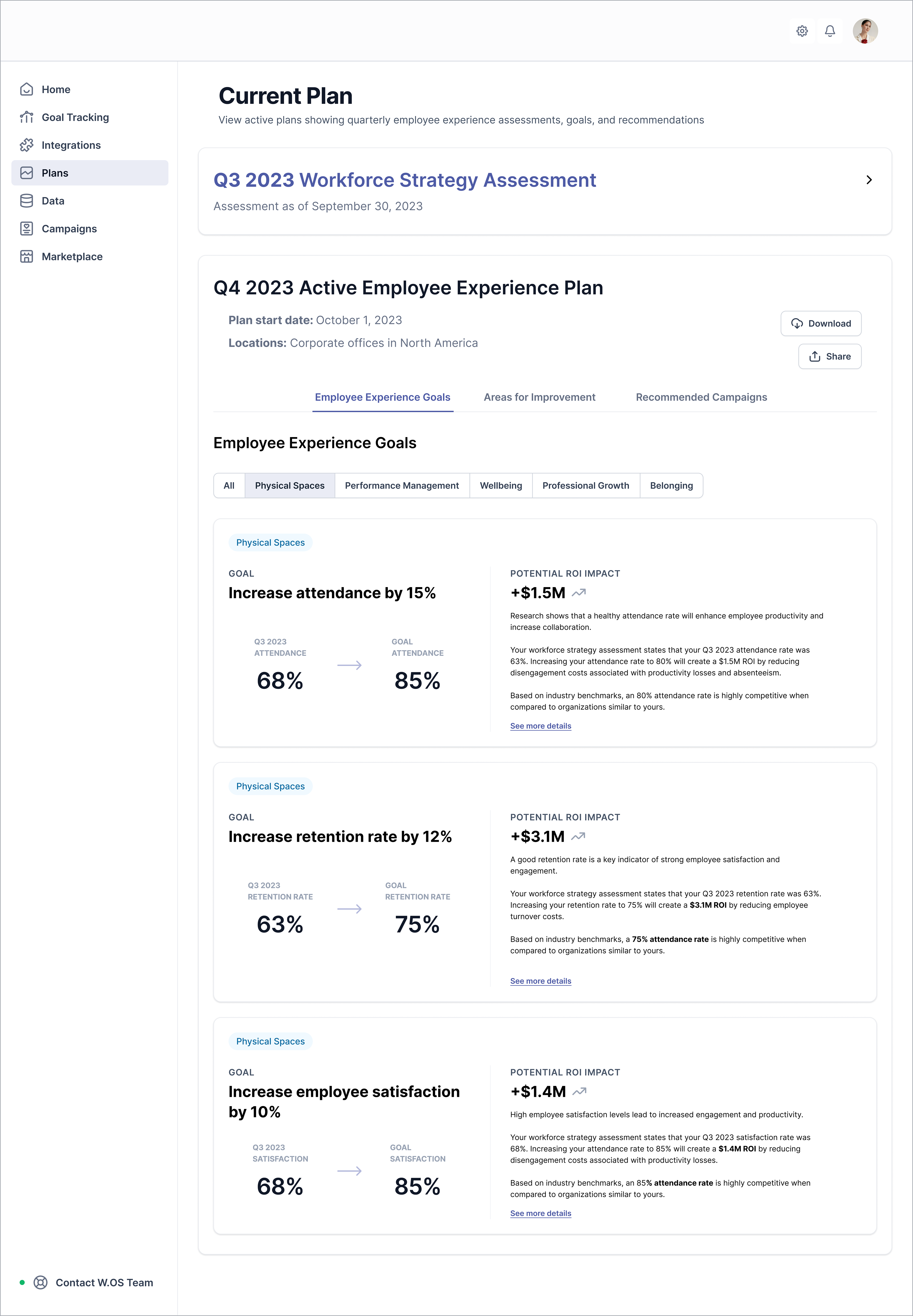
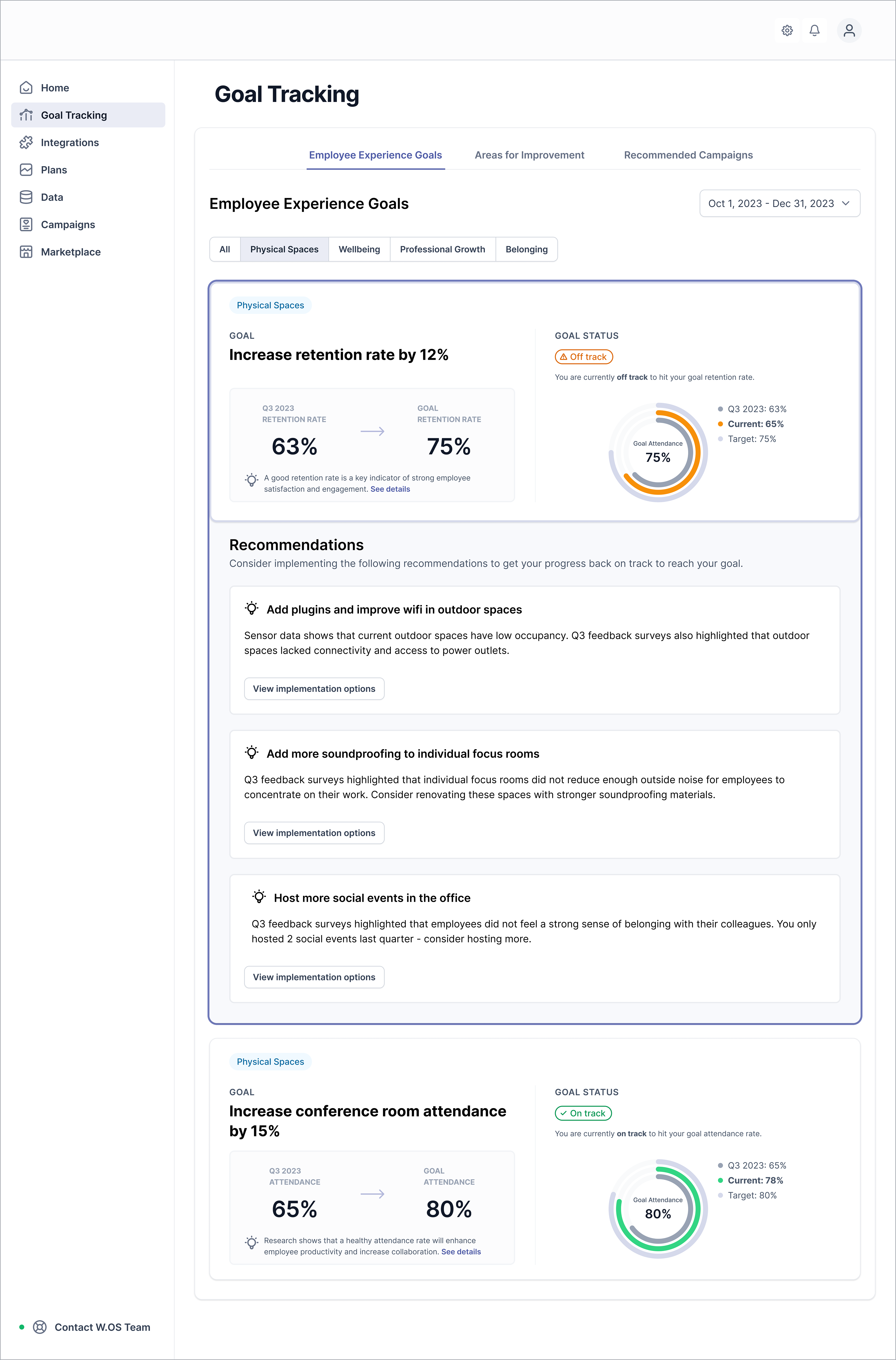
FINAL OUTCOME
The next steps after our landing page interviews involved our project lead and operating partner presenting our findings to the Venture Board Members, who were acting as sponsors. Ultimately, we received a Go-decision to receive funding for further development and the solution has evolved into a core piece of our client's operations.
